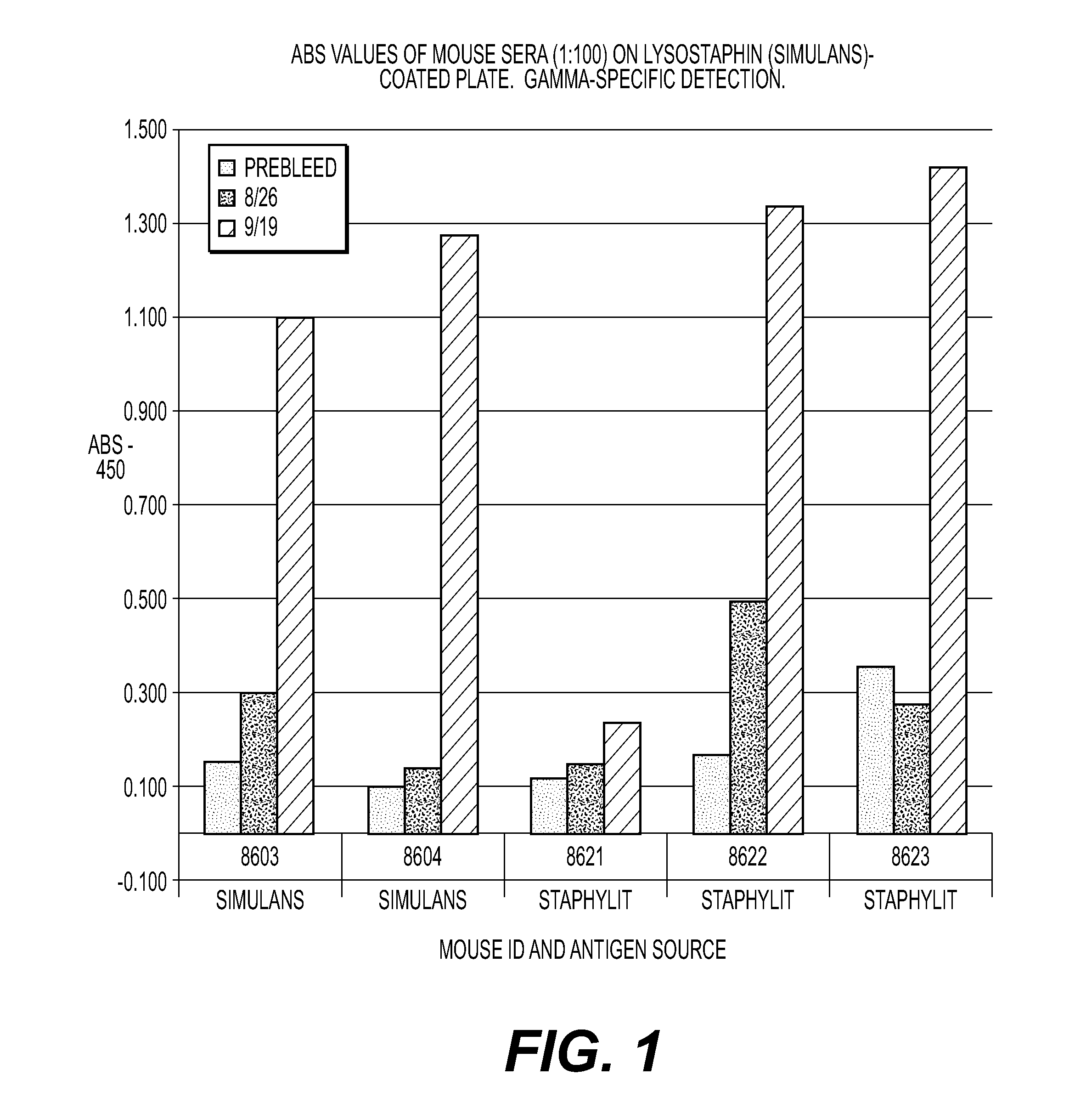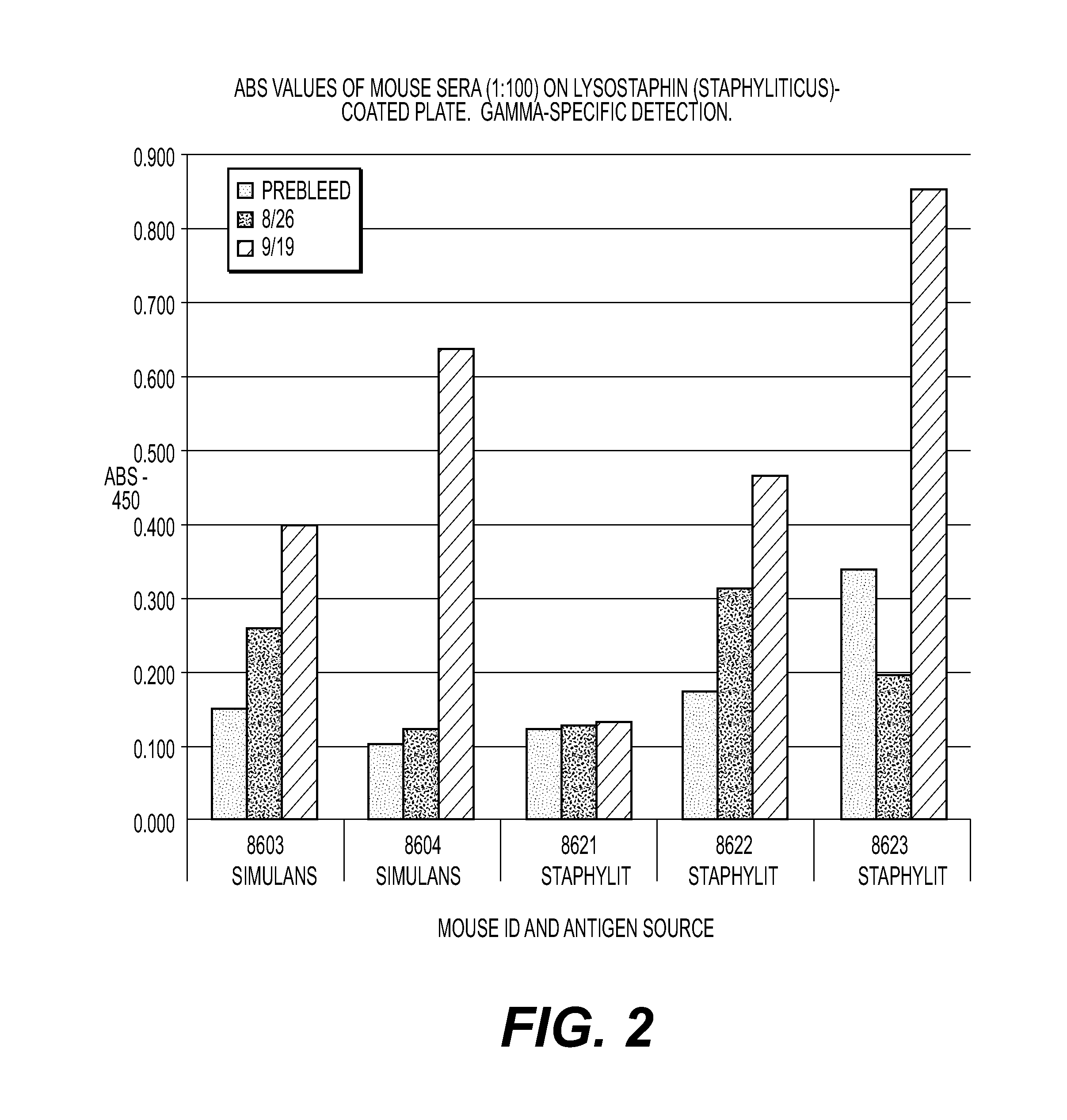Ultra-Low Dose Lysostaphin for Treating MRSA
a lysostaphin and ultra-low dose technology, applied in the field of patients' diseases and disorders, can solve the problems of difficult treatment, severe sa infections such as endocarditis, and high risk of diabetes and premature infants, and achieve the effect of effective treatmen
- Summary
- Abstract
- Description
- Claims
- Application Information
AI Technical Summary
Benefits of technology
Problems solved by technology
Method used
Image
Examples
example 1
[0048]Ultra-low dose lysostaphin (ULDL) (0.005-0.5 mg / kg) is given intravenously or at the site of MRSA infection in combination with one or more selected antimicrobials. These antimicrobials include, but are not limited to nafcillin, oxacillin, methicillin, vancomycin, gentamicin, quinolones, erythromycin, rifampin, polymixins and antimicrobial peptides. A tissue or foreign body infection treated with a short burst of 1-6 ultra-low doses over 1-3 days in combination with one or more antimicrobials eradicates bacteremia and improves survival. In addition, a continuous ULDL infusion over 12-28 hours clears bacteremia and infection.
example 2
[0049]ULDL enhances immunity to MRSA when phagocytic cells come in contact with MRSA in the presence of ULDL alone (0.005-0.5 μg / ml) and in combination with one or more selected antimicrobials at or below their mic / mbc. The phagocytes have increased phagocytosis and or greater MRSA killing.
example 3
[0050]Two lysostaphin products are injected into mice (one produced in S. simulans, subspecies S. staphylolyticus {natural}, and one produced in E. coli designated S. simulans {recombinant}). As lysostaphin is an immunogenic protein, when injected (into people or animals) antibodies are generated that may cause side effects after previous exposure. Anti-lysostaphin antibodies are produced in the serum by both products. Despite the fact that both products induced similar anti-lysostaphin antibodies, the antibodies induced by both products had markedly higher binding to recombinant lysostaphin compared to non-recombinant lysostaphin. One animal in the non-recombinant lyso-group produced almost no antibody response. Surprisingly, these data demonstrate that the method of production can provide a lysostaphin molecule that has increased binding to anti-lysostaphin antibodies. The recombinant lysostaphin is more reactogenic and more potent than conventionally produced lysostaphin. Thus, t...
PUM
| Property | Measurement | Unit |
|---|---|---|
| Density | aaaaa | aaaaa |
| Density | aaaaa | aaaaa |
| Density | aaaaa | aaaaa |
Abstract
Description
Claims
Application Information
 Login to View More
Login to View More - R&D
- Intellectual Property
- Life Sciences
- Materials
- Tech Scout
- Unparalleled Data Quality
- Higher Quality Content
- 60% Fewer Hallucinations
Browse by: Latest US Patents, China's latest patents, Technical Efficacy Thesaurus, Application Domain, Technology Topic, Popular Technical Reports.
© 2025 PatSnap. All rights reserved.Legal|Privacy policy|Modern Slavery Act Transparency Statement|Sitemap|About US| Contact US: help@patsnap.com



